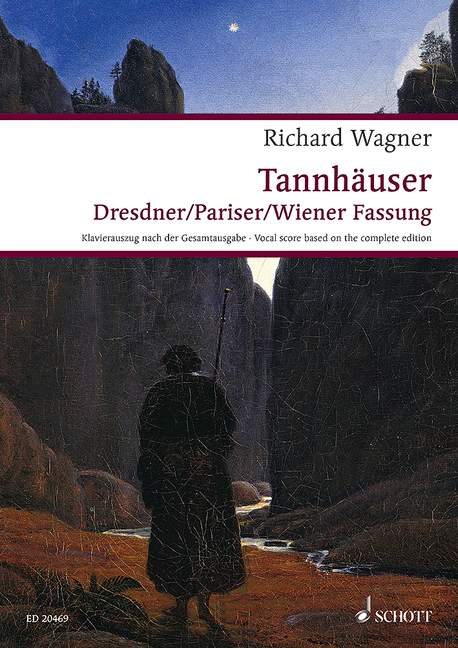THE MUSIC SHOP of Editio Musica Budapest Zeneműkiadó
Cena: $62.10 (Brez DDV)
Edited by Wagner, Wolfgang Michael
Zasedba: Voice and piano
Obdobje: Romantic
Jezik: German, French
Število strani: 592 strani
Format: 21 x 29,7 cm (A/4)
Weight: 1.86 kg
Leto izdaje: 01. avgust 2012
Založba: Schott
Številka artikla: ED20469
ISMN: 9790001154543
An important addition to Schott's newly published orchestral material is the first publication of piano scores for the ten major operas by Richard Wagner in all major versions. For the first time, we offer the stages and interested opera lovers piano scores as urtext editions that were designed according to uniform editorial criteria.-The score is aligned with the performance material of the Complete Edition. -All piano scores have study numbers and continuous measure numbers for rehearsal and study practice. -The editors are renowned musicologists from the circles of those working on the Richard Wagner Complete Edition who contribute detailed information on the respective editions to the critical prefaces.-The prefaces are printed in three languages (German, English, French). -The uniform appealing cover design with reproductions of paintings from the Wagner era emphasizes the serial character of the edition.TANNHÄUSER''For the Richard Wagner Complete Edition, the editors Egon Voss, P eter Jost and Reinhard Strohm as well as Cristina Urchueguía have researched and presented Tannhäuser's genesis and history of more than thirty years, which also took about thirty years of scientific work, on 2,959 pages in eight volumes. With the present piano score, the findings gathered therein shall now also to be made accessible for the musical practice.'' (Wolfgang M. Wagner, quoted from the foreword to the new Tannhäuser piano score)The piano score unites for the first time all four stages of the work (the score as of 1845, the score as of 1860, the Paris version as of 1861/62 with the complete French text of this version, and the Vienna version as of 1875) in a single excerpt for rehearsal and study practice, thus allowing the comparison of the versions, without sacrificing practicability.All variants are printed one after the other in the chronological sequence of the action on the stage, so that each of them can be explored in their context of action by simply turning over th
 Deutsch
Deutsch English
English Español
Español Français
Français Magyar
Magyar Polski
Polski Română
Română Slovenský
Slovenský 中文
中文



